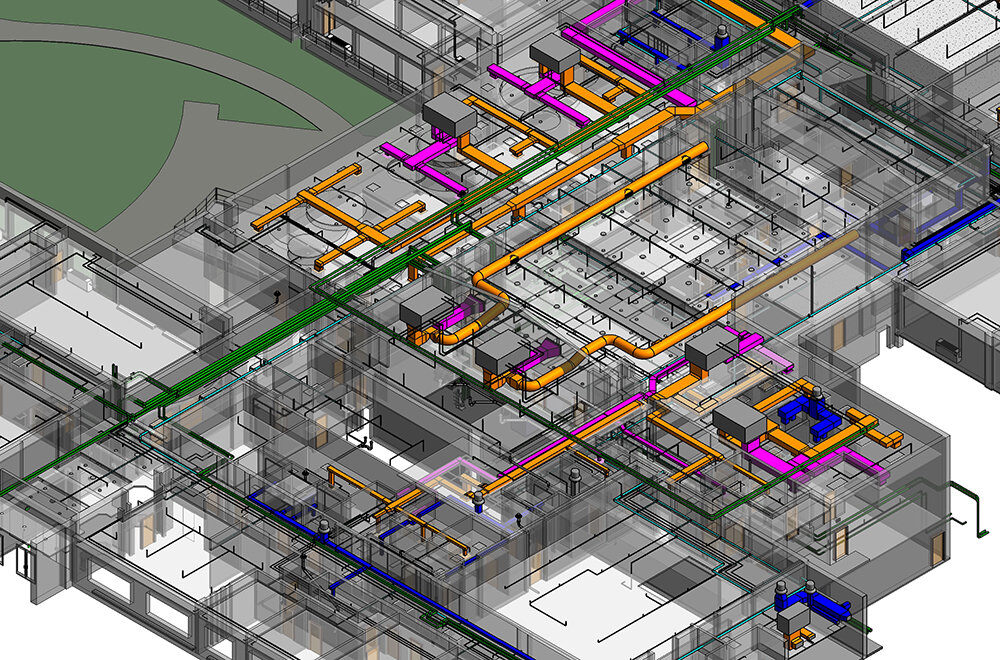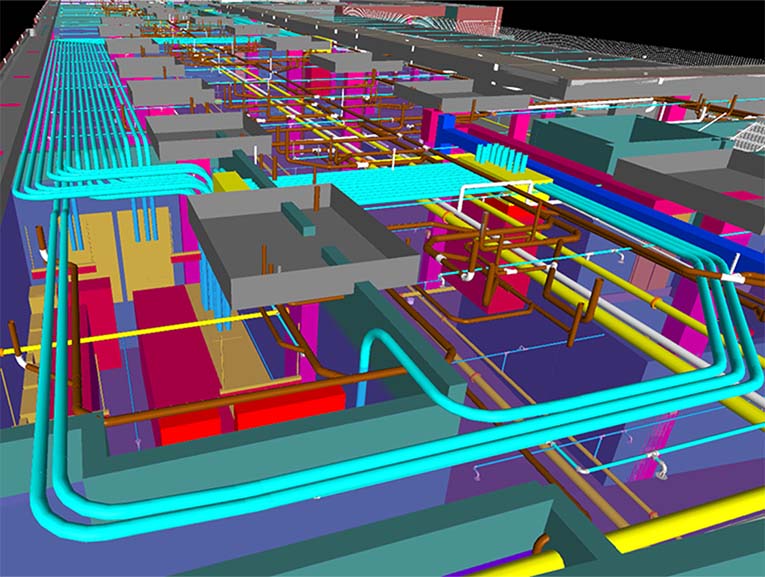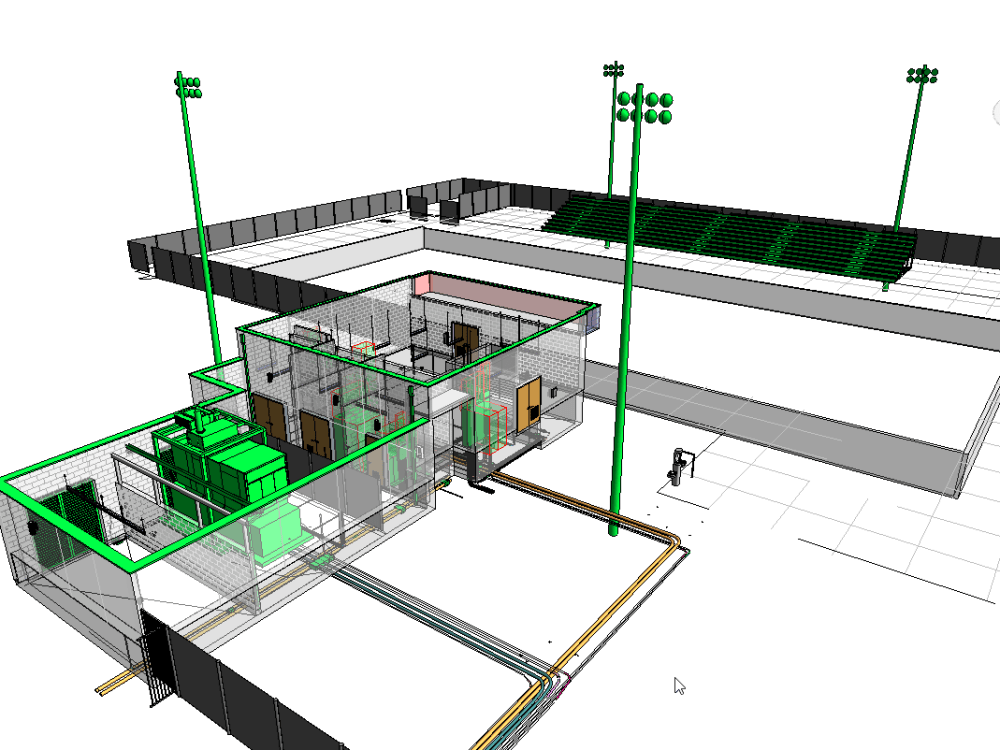.png)
In the evolving landscape of construction technology, the debate between Autodesk Construction Cloud vs BIM 360 has become increasingly relevant for professionals in the MEP industry. With the rapid digital transformation of MEP engineering, understanding which platform offers better workflows, coordination, and support for MEP drafting software is essential.
For years, BIM 360 software has helped manage MEP projects through cloud-based collaboration. However, Autodesk Construction Cloud (often referred to as ACC Cloud) now promises a more integrated and scalable experience. As MEP engineers seek better tools to manage MEP systems, ensure precision in MEP BIM modelling, and improve efficiency across MEP infrastructure, choosing the right platform becomes critical.
So, if you're wondering which way to go in 2025, consider sticking with BIM 360 or transitioning to Autodesk Construction Cloud; this blog is your go-to guide. Let us break down both platforms, compare their features, and help you determine which one best suits your MEP design and coordination needs.
What Is BIM 360 and How Has It Been Used in MEP Projects?

If you are new to the cloud-based construction ecosystem, you may ask: What is BIM 360 exactly? In simple terms, it is Autodesk’s cloud platform designed to facilitate project delivery, improve collaboration, and reduce errors in design and execution.
Since its launch, BIM 360 software has been widely used in the MEP in architecture space for design reviews, issue tracking, and document management. It integrates effectively with tools like Revit MEP software and Navisworks, allowing teams to collaborate on models and identify clashes early.
In MEP projects, BIM 360 streamlined workflows for MEP BIM modelling, RFI management, and drawing approvals. It allowed remote access, giving engineers the flexibility to coordinate across multiple disciplines. Many BIM MEP services providers adopted BIM 360 for its straightforward interface and reliable performance.
Also Read: Top 10 MEP Engineering Courses in India 2025
What Is Autodesk Construction Cloud (ACC) and How Is It used in MEP Engineering?
Autodesk Construction Cloud, or ACC Cloud, is not just an upgrade; it is a reimagined construction ecosystem. Built with insights from BIM 360, Autodesk Construction Cloud combines multiple tools (like Build, Docs, Takeoff, and BIM Collaborate Pro) under one umbrella. It offers a more advanced and connected workflow across design, planning, and execution.
For the MEP engineer, ACC simplifies construction planning software by offering real-time coordination, advanced analytics, tighter permissions control, and deeper integration with MEP software tools.
Unlike BIM 360, ACC is designed for cross-platform data flow, meaning you can seamlessly connect your Revit MEP models, Navisworks clashes, and field data into one common environment. The result? A smoother, faster, and more accountable project lifecycle, from MEP design to commissioning.
ACC also provides centralised dashboards, improved issue tracking, and the flexibility to scale across organisations. This makes it ideal for firms looking to expand their MEP engineering capabilities globally.
BIM 360 vs ACC: What Are the Key Feature Comparisons?
|
Feature |
BIM 360 |
Autodesk Construction Cloud |
|
User Interface |
Simple, but dated |
Modern and responsive |
|
Data Environment |
Modular and slightly fragmented |
Unified common data environment |
|
Integration |
Good with Autodesk tools |
Excellent with all Autodesk and third-party apps |
|
Issue Tracking |
Available |
Improved with automation and better visuals |
|
Analytics |
Basic reporting |
In-depth analytics and dashboards |
|
Scalability |
Limited to certain workflows |
Scalable across large enterprises |
|
Collaboration |
Strong |
Enhanced with real-time insights |
From the above, it is clear that ACC has been designed to overcome the limitations of BIM 360 software, offering enhanced project insights, automation, and control features highly valued in large-scale MEP works within the construction industry.
Also Read: Top 50 MEP Interview Questions & Answers 2025
How Do Both Platforms Handle Collaboration and Coordination?
Collaboration is at the heart of any MEP drafting software, and both platforms perform decently. However, the game changes when the scale of collaboration increases. BIM 360 supports file-based collaboration, allowing multiple users to work on a central model. This was game-changing in the earlier days of cloud adoption. However, real-time feedback was limited, and integrations required manual synchronisation or the use of third-party tools.
With Autodesk Construction Cloud, MEP engineers can now work in a more live environment. Clash detection, RFI resolution, and model coordination happen in a real-time setting. The link between Revit MEP, Navisworks, and cloud data is seamless. Also, for distributed teams or projects involving multiple consultants, ACC’s cloud infrastructure significantly reduces delays. It is a massive advantage in MEP BIM modelling, especially when accuracy and time are mission-critical.
Which One Offers Better Integration with Revit, Navisworks, and MEP Tools?
Let us be honest, MEP engineers live and breathe Revit MEP and Navisworks. So integration with these tools is a make-or-break feature. BIM 360 did a decent job of integrating with Revit MEP software and allowing cloud worksharing. However, it often faced limitations in version control and managing large file sizes across different disciplines.
On the other hand, Autodesk Construction Cloud shines with its deep-rooted integration. Models from Revit MEP, clash reports from Navisworks, and updates from the site can all feed into a single ACC project. The unified data environment ensures everyone, from the MEP design team to site engineers, sees the same version of the truth.
If your firm relies on advanced MEP design software, 3D modelling, and BIM software, then ACC is the stronger, future-proof choice.
What Should MEP Engineers Use Going Forward?
The decision between Autodesk Construction Cloud vs BIM 360 depends on your firm’s current workflow maturity, team size, and vision. If you are working on smaller MEP projects or are still getting used to cloud-based collaboration, BIM 360 might be sufficient for now. It is reliable, tested, and familiar. However, Autodesk is gradually phasing out support for BIM 360, which means newer features and updates will largely benefit ACC users.
For firms aiming to scale, embrace automation, and coordinate multi-disciplinary MEP infrastructure, ACC is the smarter investment. It offers a more cohesive experience for project owners, contractors, and design consultants alike.
Moreover, with the evolution of MEP in architecture and smart cities, projects today demand robust cloud solutions that not only support MEP software but also offer predictive insights, mobile access, and long-term project health tracking.
Also Read: Major Projects Built on BIM MEP in India
Conclusion
In the battle of Autodesk Construction Cloud vs BIM 360, the direction Autodesk is moving in is clear. While BIM 360 was a solid stepping stone for cloud-based collaboration in the MEP industry, Autodesk Construction Cloud is the future-ready platform built for scale, complexity, and agility.
Whether you are managing HVAC systems in high-rise buildings or coordinating plumbing and electrical in a multi-phase project, ACC provides the tools, integrations, and intelligence required to streamline every phase of MEP engineering.
To stay competitive in 2025 and beyond, MEP engineers must align with tools that enhance productivity, reduce risk, and improve collaboration. With ACC, you are not just managing projects; you are setting new standards for quality and coordination in the world of MEP design services.
The BIM Professional Program for MEP Engineers by Novatr is a standout choice. To get the latest updates and explore more, visit our Resources Page.
FAQs
1. What’s the difference between Autodesk Construction Cloud and BIM 360?
BIM 360 is a part of the Autodesk Construction Cloud (ACC) ecosystem but is considered a legacy platform. ACC offers a more integrated environment with improved tools for document management, coordination, cost tracking, and field collaboration, built on a unified platform with enhanced scalability and performance.
2. Which platform is better for MEP engineers in 2025?
In 2025, Autodesk Construction Cloud is the better choice for MEP engineers due to its modern interface, tighter integration with Revit and Navisworks, and improved project lifecycle support. It offers advanced features for coordination, issue tracking, and model sharing that streamline MEP workflows.
3. Can MEP teams transition easily from BIM 360 to Autodesk Construction Cloud?
Yes, Autodesk provides migration tools and support for teams moving from BIM 360 to ACC. Since both platforms are Autodesk products, the transition is relatively smooth, with familiar workflows and improved functionality in ACC
Was this content helpful to you



.jpeg)



